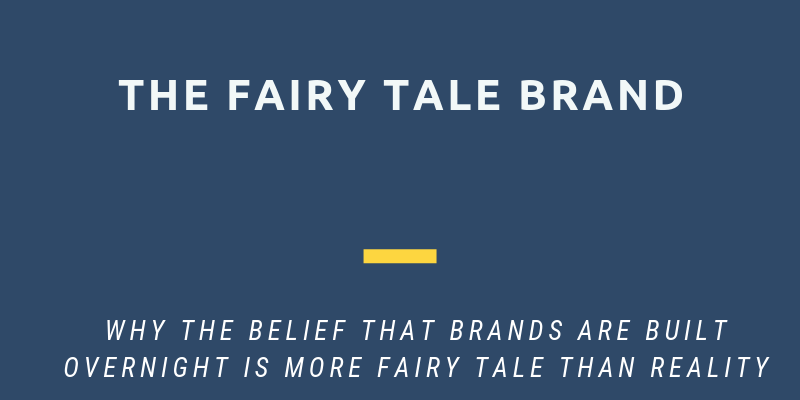The phrase “Once upon a time” has been an opening narrative to some of history’s greatest fairytales, and is a phrase befitting of introducing the story of those business leaders who believe their brands can be built overnight. This mindset lives along the lines of wishful thinking, resembling more fairytale than reality. The cold hard truth is that brands are not built overnight, nor in a week, a month, and sometimes not even years.
I’ve worked with a multitude of startup founders and seasoned business leaders who contact me in hopes of fast-tracking the development and market recognition of their brands. It’s not uncommon for a client to enter initial conversations with thoughts of websites, logos, social media, and apps on their mind. These conversations often lean toward the visual representations of their brand, which is understandable since we are all visual people.
Perception is often reality, and when we witness a company having success via a specific medium, we’re usually prone to emulate what we see works. This approach must be taken with caution because success is never cut and dry; there is a multitude of unseen factors in place behind the scenes that drive a brands success.
Why brands are never built overnight
The reasoning for why brands are never built overnight can be found in taking a closer look at the phrase “build a brand.” The area of focus should be on term “build,” which is often defined as “constructing by putting parts or material together over a period of time.”
All brands, including your own, are built over time. There are no magic beans, magic lamps, or viral videos that will prove this statement wrong. Building a brand is a sequential process, a process that requires a multitude of decisions to be strategically aligned, one after another.
As a strategist, I find myself looking through a lens that views brands as reputation and branding as the process of reputation building.
Branding is not a single tract nor a term with ten different meanings; it is comprised of two-segmentations — Internal & External
Segmentation 1: Internal Branding
Internal branding is the process of building the foundation of your brand and business. Your foundation is centered around positioning, the conceptual place you want to own in your target consumer’s mind — the benefits you want them to think of when they think of your brand.
The power of self-awareness, knowing precisely who you are, what you do, and whom you do it for, is invaluable. These are just three of the twelve elements of positioning, but when fully defined the probability of your endeavor succeeding will drastically increase.
A weak foundation leaves you vulnerable in ways that can disrupt and even collapse your business. Place a focus on the internal elements of your brand before ever conceptualizing a logo, website, and other promotional touch-points.
Segmentation 2: External Branding
External branding is where you begin thinking of things like logo, tagline, website, color scheme, and so on. It’s secondary to developing a foundation, but it’s extremely important because it’s the process of developing marketing touch-points that convey your defined messaging & visually differentiate your brand from others in the minds of your target audiences.
Defining the internal elements of your brand before approaching the external elements increases the effectiveness of your promotional material and mediums you create. This is important because marketing initiatives are not cheap; they require large investments of your time and dollars.
Conclusion
Making promotion a priority over positioning will only result in a waste of resources & constant moments of “let’s go back to the drawing board.” Emphasizing the importance of getting the internal side of your brand correct first only strengthens the external elements and significantly impact the reach, influence, and success of your brand in the long term.
